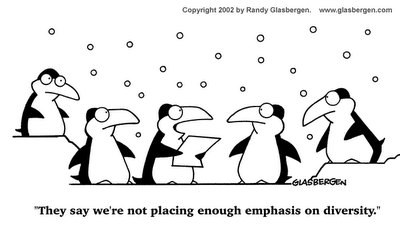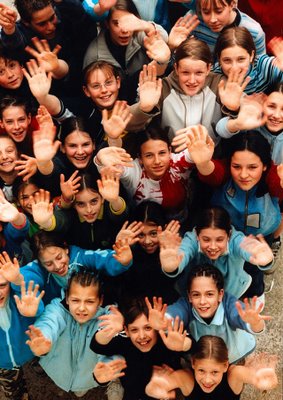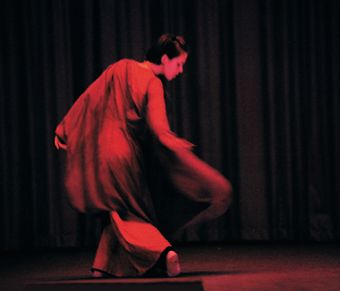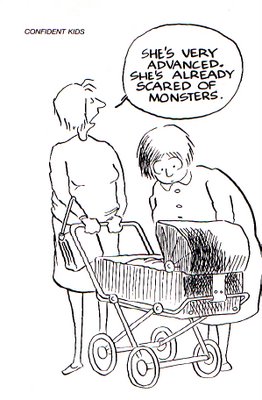
Gardner's Theory of Multiple Intelligences
Howard Gardner 1943-
Gardner is a psychologist based at Harvard University .He is world renowned for creating his theory of Multiple Intelligences.
http://www.howardgardner.com/ Howard Gardner's work around multiple intelligences has had a profound impact on thinking and practice in education.
In his book
Frames of Mind, Gardner challenged the idea that intelligence is a single entity, that it results from a single factor, and that it can be measured simply via IQ. Instead, he proposed a many-faceted approach to intelligence based on the following dimensions:
Linguistic intelligence involves sensitivity to spoken and written language, the ability to learn languages, and the capacity to use language to accomplish certain goals. This intelligence includes the ability to effectively use language to express oneself rhetorically or poetically; and language as a means to remember information. Writers, poets, lawyers and speakers are among those that Howard Gardner sees as having high linguistic intelligence.
Logical-mathematical intelligence consists of the capacity to analyze problems logically, carry out mathematical operations, and investigate issues scientifically. In Howard Gardner's words, in entails the ability to detect patterns, reason deductively and think logically. This intelligence is most often associated with scientific and mathematical thinking.
Musical intelligence involves skill in the performance, composition, and appreciation of musical patterns. It encompasses the capacity to recognize and compose musical pitches, tones, and rhythms. According to Howard Gardner musical intelligence runs in an almost structural parallel to linguistic intelligence.
Bodily-kinesthetic intelligence entails the potential of using one's whole body or parts of the body to solve problems. It is the ability to use mental abilities to coordinate bodily movements. Howard Gardner sees mental and physical activity as related.
Spatial intelligence involves the potential to recognize and use the patterns of wide space and more confined areas.
Interpersonal intelligence is concerned with the capacity to understand the intentions, motivations and desires of other people. It allows people to work effectively with others. Educators, salespeople, religious and political leaders and counselors all need a well-developed interpersonal intelligence.
Intrapersonal intelligence entails the capacity to understand oneself, to appreciate one's feelings, fears and motivations. In Howard Gardner's view it involves having an effective working model of ourselves, and to be able to use such information to regulate our lives.
http://www.infed.org/thinkers/gardner.htm
Natural Intelligence was later included by Gardner, being the capacity to understand and value the natural world, its interconnected structures and man's place within it.
Existential Intelligence, sometimes referred to as spiritual intelligence, was another later addition, referring to the ability to find and realise adequate meaning in life.
“Gardner argues convincingly that Western society as a whole, and our schools in particular, reinforce linguistic and logical-mathematical forms of intelligence while neglecting other ways of knowing. Teachers love children who are good with words and logic. However, children who show ability in dance, art, music, social relations, intuition, drama, nature, and other areas of self-expression tend not to receive as much recognition. In my own research, I have found that many children with talents in these neglected intelligences are likely to be labeled "learning disabled" or ADHD (attention deficit hyperactivity disorder) if they do not perform adequately on assigned worksheets and pop quizzes.”
http://www.thomasarmstrong.com/articles/utopian_schools.htmGardner’s work substantiated theories integral to Waldorf education since its inception more than 80 years ago. The ‘whole child’ approach has been vigilant in valuing and nurturing the learner in a complete and intergrated way, compatible with Gardner’s multi-dimensional approach.
An example of an intergrated approach to the concepts of division and fractions would be the following: Class 4 children could bake a cake together.This cake could then be shared among the class members in even portions.The numerical aspcts of this division proces could be ilustrated in both pictures and numbers. The children could be encouraged to see how parts make up a whole in nature, such as the apple having 5 divisions. The children could explore the musical divisions and understand concepts such as crotchet, minim etc. through clapping, stamping and running to the beats. Literature studies could focus on the theme of sharing. The children could be encouraged to create a piece of art where the whole is divided into even parts, perhaps with a theme such as the seasons.....In all of these activities , elements of teamwork would be encouraged, fostering development on the interpersonal level.
Working with multiple intelligences, in my opinion, means recognizing and extending obvious talents whilst challenging the learner on all levels. There is a danger in categorizing children too early and playing to their strengths. This I became aware of in relation to webquests where it could be an easy path always to give e.g. the artist the role of illustration, the eloquent child the task of verbal presentation etc.
In my work with performing arts, I have experienced enormously positive and unexpected results by giving ‘therapeutic’ roles to children. It can be a very beneficial process for the obvious performing talents in the class to at times practice restraint and allow the otherwise shy and meek children to take centre stage. These children in turn sometimes experience a ‘great leap forward’ in their development and are fundamentally positively affirmed in their feelings of self-esteem.
“Waldorf Education embodies in a truly organic sense all of the intelligences that Harvard psychologist Howard Gardner speaks about. Steiner had the breadth of vision seventy-five years ago to see something that educators are now waking up to…and Steiner’s vision is a whole one, not just an amalgamation of the intelligences. Many schools are currently attempting to construct curricula based on Gardner’s model simply through an additive process. Steiner’s approach, however, was to begin with a deep inner vision of the child and the child’s needs and to build curricula around that vision”
Thomas Armstrong, author,” Multiple Intelligences in the Classroom.”














